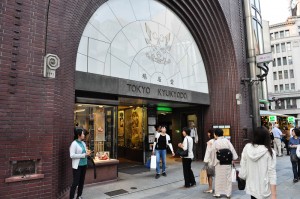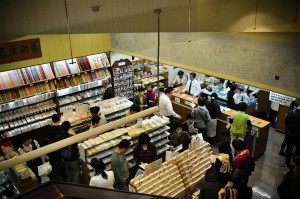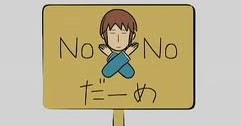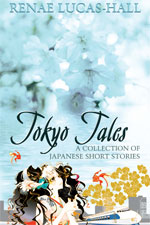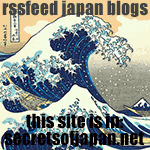
A lot of people who are thinking about visiting Japan are often put off by the fact they can’t read or write in Japanese. In reality, developing basic Japanese language skills is not as difficult as you might think. The steps below will help to simplify the process and make this daunting process seem a lot easier, especially for those people who believe it’s impossible to learn this intricate language.
Firstly, you need to know there are basically three scripts:
1. Kanji
2. Hiragana
3. Katakana
In short – kanji represents nouns, adjectives and verbs and each kanji character can represent a complete word or part of a word with one meaning or several meanings. Hiragana is the grammatical link between the kanji. Katakana represents any foreign item, place or name.
Hiragana and katakana only have forty-six characters each so it doesn’t take too long to learn these. Take a look at the table below:
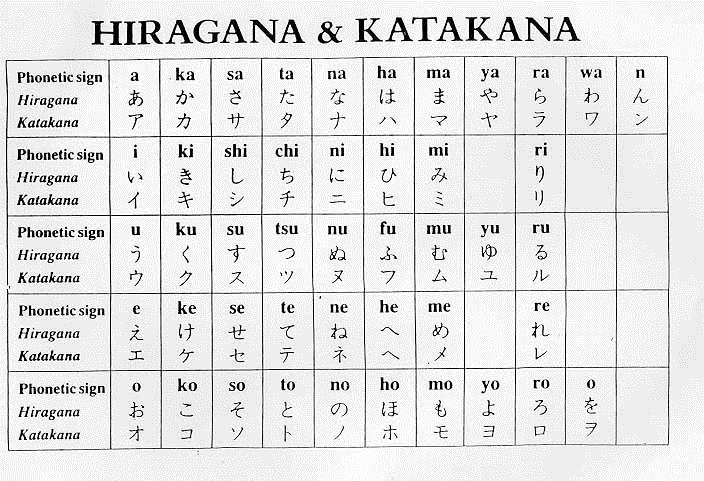
When you start learning hiragana and katakana, you’ll soon realise that learning to read and write Japanese isn’t really so daunting. Many children’s books in Japan are written in hiragana with very few kanji, so think of learning hiragana as a stepping stone to learning how to read and write Japanese properly, knowing you are learning this in the same way Japanese people learn to read and write.
Once you’ve mastered reading and writing hiragana and katakana, you can start to learn kanji but you must learn how to write each stroke of the kanji character in the correct order. If you do it this way, you’ll soon start to see it’s much easier to write more difficult kanji when you’ve learnt the correct way of writing. Don’t worry – the correct stroke order will come naturally to you in a very short amount of time. Also, don’t be put off by the fact there are about 50,000 Japanese kanji characters. The Japanese government’s list of recommended characters consists of only about 2,000 and that’s really achievable if you dedicate some serious time to this task. Even if you only learn 100 kanji characters, you are already going to have a much easier stay in Japan.
There are now several apps to help you learn Japanese and “16 Best Apps for Learning Japanese Like a Boss” is a good reference point. You could also buy a kanji textbook which teaches you the most necessary 2,000 characters and at the same time shows you how to write the easiest characters from the beginning of the book in the correct stroke order. “Essential Kanji: 2, 000 Basic Japanese Characters Systematically Arranged for Learning and Reference” by P.G. O’Neill is a good book or for something simpler I recommend “Read Japanese Today: The Easy Way to Learn 400 Practical Kanji” by Len Walsh.
When I study Japanese kanji characters I use the flash card method with the kanji written on the front and the meaning and the rōmaji equivalent on the back (rōmaji is Japanese written in the same Roman alphabet that we use in English). I flip these cards over and over until I can recognise and pronounce correctly each Japanese kanji character. I then try writing them over and over again making sure my stroke order is correct, until I’ve mastered the whole process. You can download PDF kanji cards with stroke order diagrams from KanjiCard.org.
I must admit when I started to learn Japanese, I had to memorise these kanji characters so I could pass my exams at university and therefore I obviously had a goal which pushed me to learn these characters properly. I’m glad I learnt so many because even now I can still read many Japanese characters. Understanding the signs in Japan and anything else written in Japanese makes it a lot easier for me to get around and find what I need when I’m in Japan. These days I rarely write in Japanese and I’ve forgotten how to read and write a lot of the characters but I’m always amazed at how many I do remember when I receive a letter from a Japanese friend or when I see something written in Japanese on the internet, in a book or in a magazine.
As with any other subject that can provide enormous self-satisfaction once it is mastered, learning Japanese takes persistence and perseverance, but if you see this process as a hobby rather than a chore you will, without a doubt, have a great time learning to read and write Japanese.








